Eyewitness Testimony: Don’t Believe Your Eyes
Contrary to popular belief, eyewitness testimony is often quite unreliable.
Before the advent of DNA testing and other scientific advances in forensics that have allowed law enforcement to identify suspects in a criminal case with near complete certainty, eyewitness testimony was seen as the most accurate and reliable form of evidence that could be presented in a criminal trial. If a prosecutor had a witness who identified the defendant sitting in the courtroom as the person he or she saw commit a criminal act with their own eyes, the job of a defense attorney would become very difficult. Absent a credible alibi, the best a defense attorney could do when present with such evidence against his client was attempt to call the witness’s recollection into question. More often than not, that was a difficult task to say the very least, and juries would typically give tremendous weight to the testimony of people who were present at the time a crime committed. After all, most of us like to think that we are capable of telling others what we actually witnessed and we’re likely to be believe people when they do the same.
As it turns out, though, eyewitness testimony isn’t nearly as reliable as popular opinion believes it to be:
PORTLAND, Ore. (AP) — The American legal system offers few moments as dramatic as an eyewitness to a crime pointing his finger across a crowded courtroom at a defendant.
The problem is that decades of studies show eyewitness testimony is right only about half the time – a reality that has prompted a small vanguard of police chiefs, courts and lawmakers to toughen laws governing the handling of eyewitnesses and their accounts of crimes.
Reform advocates say procedures long regarded as solid police work, from bringing a witness to a crime scene where he might see a suspect in handcuffs to the subtle encouragement of a detective during a police lineup, can fundamentally alter what someone believes they saw.
“It’s not the case that eyewitnesses are inherently unreliable,” said Gary Wells of Iowa State University, who has researched the field of eyewitness identification since the 1970s. “But we can make it better by cleaning up the procedures around it.”
Prosecutors, however, have opposed the efforts, arguing the changes erode their powers, even as studies show that witnesses are about half as likely to choose the correct suspect out of a lineup as they are to choose some combination of the innocent fillers or no suspect at all when the correct one is present.
The reexamination of eyewitness testimony comes at a time when technology and other forensic analysis are being given greater weight.
“What we see is a fairly organized and aggressive attack on all forms of evidence prosecutors use to get convictions,” said Scott Burns, executive director of the National District Attorneys Association.
Burns said criminal defense attorneys, groups that try to get wrongful convictions overturned and the American Civil Liberties Union are part of a bloc that is selecting outlier cases of prosecutorial misconduct or witness mishandling and applying that to the entire system.
It’s that attitude that gives advocates of reform migraines, said Rebecca Brown, state policy reform director for the Innocence Project, which pursues exonerations of the wrongfully convicted.
“We joke in the office that it’s like climate change,” she said. “There’s settled science, and then there’s this group of people denying it.”
None of this is all that surprising, really. The evidence that eyewitness testimony is flawed has been developing for quite some time now, with studies establishing the extent to which a person’s recollection of events can be influenced by factors ranging from anxiety, either at the time of the event or when they are testifying, to the race or ethnicity of the person being identified. As long ago as twenty-odd years ago when I was in college, this was demonstrated by a Criminal Justice professor who had arranged with another student to stage an apparent “assault” in class in the middle of a lecture. Then, he asked all of us to describe what we saw with as much detail as we could. The extent to which a classroom of roughly 20 people came up with different versions of what had just happened was eye-opening. When a Criminal Law professor in Law School staged a similar incident in a class several years later, pretty much the same thing happened. Through exercises such as this, as well as numerous other studies, it has been well established that eyewitness testimony is not as reliable as we’ve been led to believe. Indeed, one of the leading causes of wrongful conviction is faulty eyewitness testimony.
In response to these studies, and the increasing number of people whom DNA testing has later revealed to have been wrongfully convicted, courts are being asked to act:
The U.S. Supreme Court had a chance to establish a national standard for eyewitness testimony when it handled a 2012 case from New Hampshire. The court instead delegated that responsibility to the states, which could choose to overhaul their laws or do nothing at all. Most chose the latter.
In Maryland, however, legislators this week passed a bill that overhauls eyewitness identification procedures, joining roughly a half-dozen states and cities.
Among the changes that they’ve made is to require the witness to declare how confident they are in the identification, mandate that officers let a witness looking at a lineup know that “none of the above” is an acceptable response.
Governments have also instituted “blind” lineup administrators – people who don’t know who the suspect is – and a lineup that doesn’t unfairly single out a suspect. They also call for any photo lineups of suspects to be randomized.
In Texas, the state allowed agencies to cut the law to fit their individual needs. Law enforcement agencies must either adopt the Law Enforcement Management Institute of Texas’ guidelines for lineups composed of people or photographs, or submit their own plan that conforms to it.
While legislatures have pushed some of the changes, courts in Oregon and New Jersey have also gotten involved in setting stringent requirements.
In Oregon, for example, the justices unanimously said they couldn’t ignore thousands of studies and years of evidence demonstrating how notoriously unreliable eyewitness testimony can be. Now, prosecutors must first show the testimony is more likely than not to be reliable.
The changes in New Jersey were discussed in August 2011 in The New York Times:
The New Jersey Supreme Court, acknowledging a “troubling lack of reliability in eyewitness identifications,” issued sweeping new rules on Wednesday making it easier for defendants to challenge such evidence in criminal cases.
The court said that whenever a defendant presents evidence that a witness’s identification of a suspect was influenced, by the police, for instance, a judge must hold a hearing to consider a broad range of issues. These could include police behavior, but also factors like lighting, the time that had elapsed since the crime or whether the victim felt stress at the time of the identification.
When such disputed evidence is admitted, the court said, the judge must give detailed explanations to jurors, even in the middle of a trial, on influences that could heighten the risk of misidentification. In the past, judges held hearings on such matters, but they were far more limited.
The decision applies only in New Jersey, but is likely to have considerable impact nationally. The state’s highest court has long been considered a trailblazer in criminal law, and New Jersey has already been a leader in establishing guidelines on how judges should handle such testimony.
Stuart J. Rabner, the court’s chief justice, wrote in a unanimous 134-page decision that the test for reliability of eyewitness testimony, as set out by the United States Supreme Court 34 years ago, should be revised.
A study shortly after the Court’s ruling establishes that changes of the type the New Jersey Supreme Court ordered can help drastically cut down on the number of bad eyewitness identifications and in turn the number of wrongful convictions. Quite obviously, that leaves a lot of states that have yet to significantly reform their rules regarding eyewitness testimony, not to mention a Federal Court system that has yet to do so itself. So, it’s entirely probable that there are still people being wrongfully convicted because eyewitness testimony is being handled incorrectly. That’s something that ought to change.
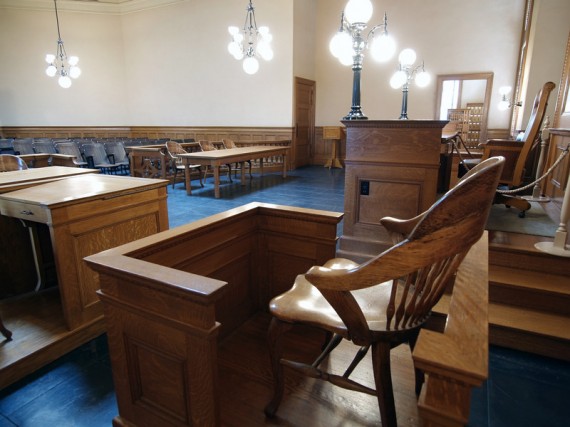

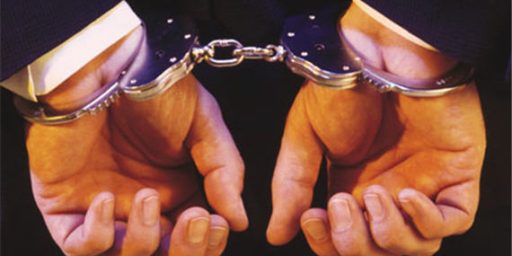
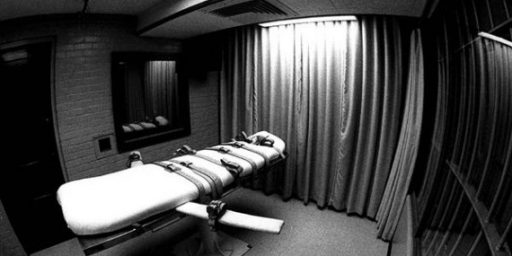
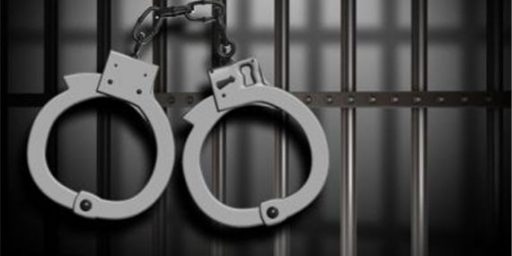
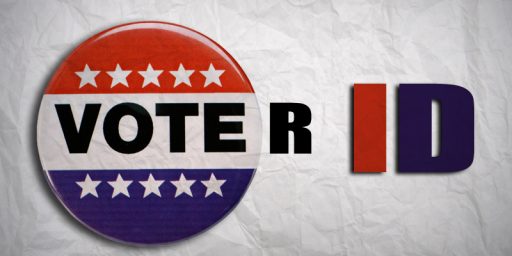

There are only a few types of evidence: eyewitness testimony, exhibits, documentary evidence, demonstrative evidence. All have problems.
I believe that’s something not widely recognized. One of the reasons that people were tortured to secure confessions, say, 500 years ago is that in order to impose capital punishment the accused had to confess and that was at least in part because of a recognition of the shortcomings of the various kinds of evidence.
I’ll leave an explanation for why people are tortured to secure confessions now to those who approve of such things.
This has been known for a very very long time — Elizabeth Loftus started doing important research into this in the 70’s. It’s not just that eyewitness memory is unreliable, it can also be influenced by the wording of the questions that are being asked.
Yes both police, prosecutors and defense attorneys are very good at getting people to remember what they thought the saw which is what they wanted them to see.
Film lovers may recall Rashomon.
Years ago my youngest son did a college paper Loftus” work on false childhood memories. Since his high school English classes did not really teach him what he needed to know the first couple of years I “cleaned up” his papers. This paper was a real eyeopener to me. Who knows how many people were convicted of crimes they didn’t commit because of false memories implanted in children.
The Invisible Gorilla
@Ron Beasley:
The Fells Acres and McMartin cases come to mind. I had no idea till I read some of the testimony in the Fells Acres case to what degree those children had been manipulated. Sample (to the best of my recall):
Q. Did Miss Vi touch your bottom?
A. No.
Q. Show me on the doll where Miss Vi touched you.
A. She didn’t touch me.
Q. If you show me where Miss Vi touched you, you can have a lollipop.
A. Okay.
The kids also came out with a bunch of wild tales of magic room where elephants (real ones) were killed. They were clearly encouraged to fantasize, and they did.
@Mikey: That’s what came to my mind as well. In one of my law classes we had someone come in and talk about picking jurors for litigation and other court case stuff. That clip was shown to demonstrate exactly how little we may notice.
When I was a prosecutor and the cops (or rather, CID or the MPs) brought me a case and said they had an eye witness, the first thing I asked was what evidence do you actually have. I don’t think I have ever had a witness give the same story twice, unless it was the exact same story word for word, but god forgive you if you asked any detailed questions.
@CSK: The case that really comes to mind quickly is the case detailed and told in the motion picture “My Cousin Vinnie”, one of the best trial movies ever made. Yes, eyewitness testimony can be very faulty.
I once saw a guy run an old woman over in a beat up old Ford 4wd P/U. I was rising up from the bus stop bench after the sound of the crunch, and he looked me dead in the eye with that “Oh, SH1T!!!!” look in his eyes. I will go to my grave dead certain that I could pick him out of a line up and grateful as all hell that I was never called in for a line up.
Picking Cotton. If she couldn’t do it, what makes me think I could?
“studies show that witnesses are about half as likely to choose the correct suspect out of a lineup as they are to choose some combination of the innocent fillers or no suspect at all when the correct one is present.”
A bit misleading. Not being able to identify the suspect when the suspect is present doesn’t contribute to convictions of the innocent. The relevant comparison would be comparing a false identification to all non false identification. Non false identification includes not indentifying anyone. Also many of these studies need to be taken with a grain of salt. They will often force the participants to answers questions when they admittedly do not remember therefore causing them to give wrong answers. An investigator and a court of law will ask many questions but they allow “I don’t know” as an answer.